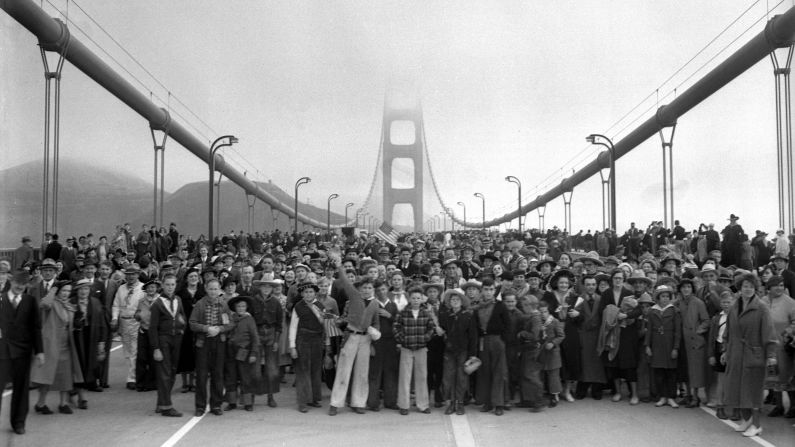Have you ever wondered how the awe-inspiring Golden Gate Bridge came to be? It’s not just a tourist destination, but a symbol of human ambition that defied nature’s fury. This article dives deep into the bridge’s history, revealing the daring vision that brought it to life. But the story isn’t all sunshine and roses. Construction was a perilous undertaking, pushing the boundaries of engineering and human courage. We’ll explore the innovative safety measures taken to protect workers, the tragic accidents that occurred, and the enduring legacy of this remarkable bridge.
Bridging the Dream: The Daring Vision Behind the Golden Gate Project
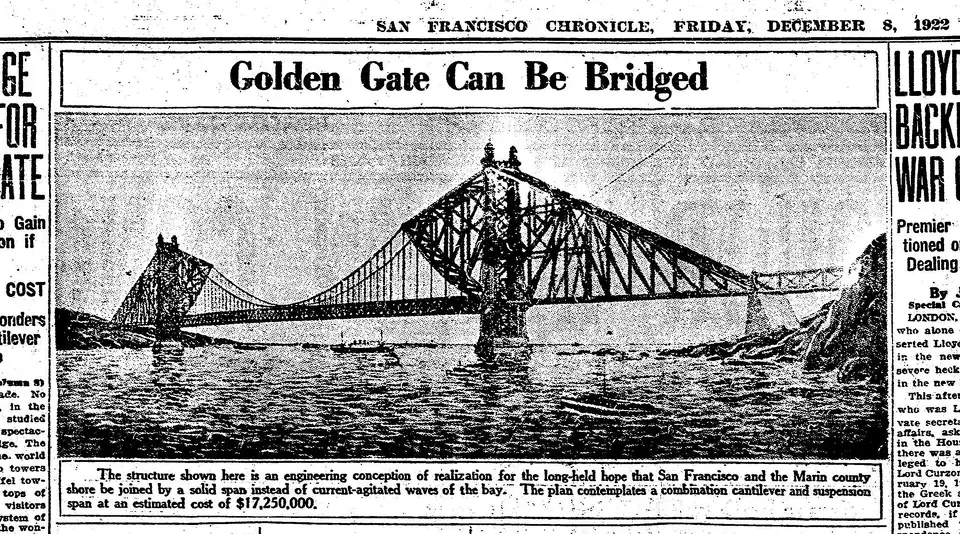
The Golden Gate Bridge isn’t just a San Francisco landmark, it’s a symbol of human ambition and engineering marvel. But before this iconic structure rose from the mist, there was a dream – a daring vision to connect a bustling city to a world of opportunity across a treacherous expanse of water.
San Francisco, by the early 20th century, was a booming metropolis. However, its access to the north was severely limited by the Golden Gate strait. This narrow passage, just over a mile wide, boasted fierce currents, strong winds, and thick fog. Ferries were unreliable and dangerous, hindering trade and travel. The city desperately needed a permanent link – a Golden Gate Bridge.
Enter Joseph Strauss, a visionary engineer who dared to bridge this formidable gap. Strauss wasn’t a newcomer to audacious projects. He’d already overseen the construction of several notable bridges, including the bascule bridge across the Willamette River in Portland, Oregon. Yet, the Golden Gate presented a unique set of challenges.
The treacherous waters posed a constant threat to construction crews. The immense scale of the project, requiring suspension towers reaching over 700 feet, pushed the boundaries of engineering at the time. But Strauss, ever the optimist, saw these challenges not as roadblocks, but as opportunities for innovation.
Safety was paramount in Strauss’s vision for the Golden Gate Bridge. He knew construction at such heights and in such harsh conditions would be inherently dangerous. This commitment to worker safety would become a crucial aspect of the project, setting a new standard for bridge construction (something we’ll explore further in a later section).
Strauss, along with a team of brilliant engineers, devised a plan to conquer the Golden Gate. Their daring vision would not only transform San Francisco but also become a testament to human ingenuity and the power of dreams to bridge even the most formidable obstacles.
Constructing a Colossus: Perilous Work High Above the Waves
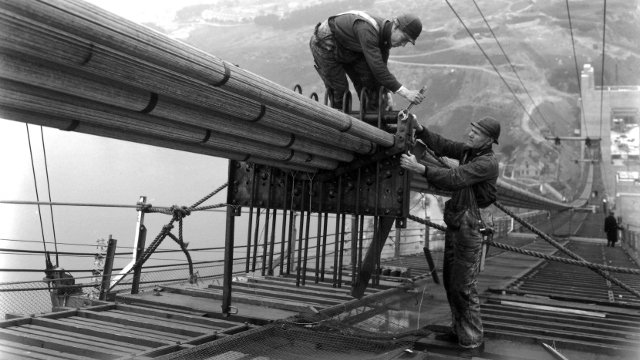
The Golden Gate Bridge’s construction, beginning in 1933, was a monumental undertaking. Imagine a workforce of over 6,000 men, not perched on secure scaffolding, but suspended hundreds of feet above the churning waters of the Golden Gate strait. The constant threat of strong winds, thick fog, and icy rain made this a workplace unlike any other. The very act of building the Golden Gate Bridge became a testament to human courage and the will to conquer the seemingly impossible.
The immense scale of the project added another layer of danger. The bridge’s two suspension towers, reaching a staggering 746 feet, were the tallest structures ever built in the United States at the time. Workers, often referred to as “ironworkers,” braved these dizzying heights to meticulously assemble the steel framework, battling not just the elements but the psychological strain of such a precarious position.
Joseph Strauss, ever mindful of the inherent risks, championed innovative safety measures. One such crucial measure was the installation of a massive safety net system. This net, stretching nearly 2,000 feet long and 30 feet wide, extended out from below the construction zone. While not foolproof, it offered a vital layer of protection for workers who might lose their footing or be struck by falling tools. The net, dubbed the “life net” by the ironworkers, is credited with saving countless lives throughout the construction process.
Despite these precautions, working on the Golden Gate Bridge remained a perilous endeavor. The unforgiving weather conditions constantly threatened worker safety. Strong winds could send tools and materials careening wildly, while thick fog could obscure vision and make even basic tasks hazardous. The constant battle against the elements became a defining aspect of the bridge’s construction, a testament to the ironworkers’ remarkable resilience.
The construction of the Golden Gate Bridge wasn’t just about laying steel and pouring concrete; it was a constant dance with danger. By employing innovative safety measures and fostering a culture of caution, the project’s leadership managed to mitigate some of the inherent risks. However, the story of the bridge’s construction is also a story of bravery, as the ironworkers faced down their fears every day to make this engineering marvel a reality.
A Day of Tragedy: The Scaffold Collapse and the Loss of Life
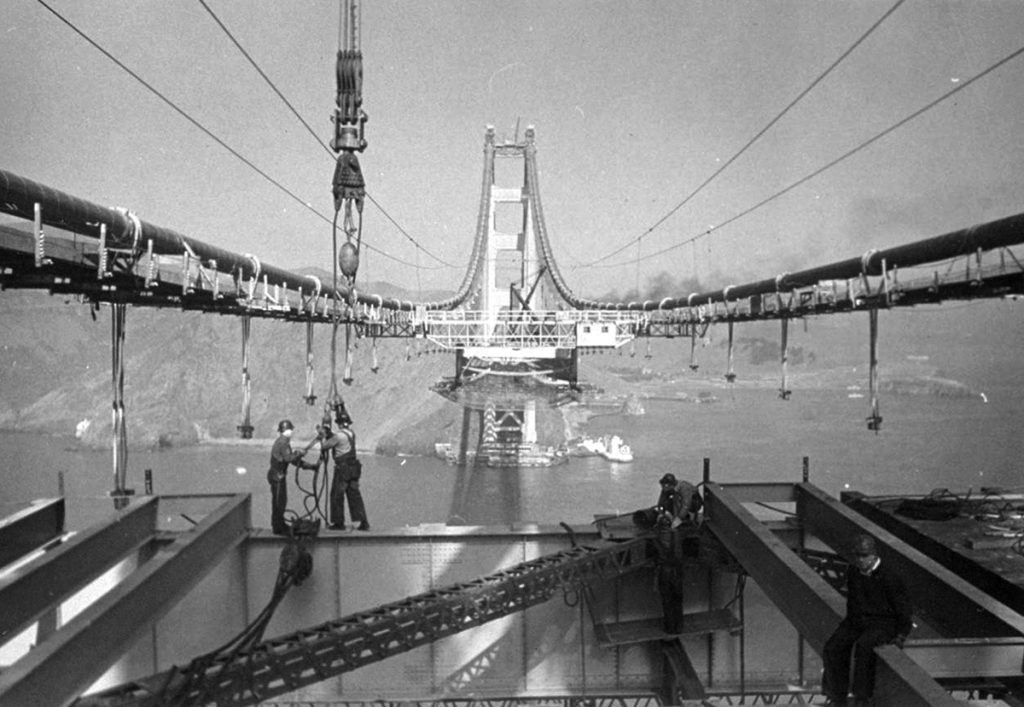
The construction of the Golden Gate Bridge wasn’t without its share of tragedies. Despite Joseph Strauss’s emphasis on safety, a single incident on February 17, 1937, cast a dark shadow over the project. On that fateful day, a scaffold failure resulted in the Golden Gate Bridge’s deadliest accident, claiming the lives of ten ironworkers.
The accident occurred during the construction of the suspended walkway on the bridge’s western side. A network of scaffolding platforms, suspended hundreds of feet above the water, provided a precarious work surface for the ironworkers. Unfortunately, a critical section of this scaffolding malfunctioned. Eyewitness accounts describe a heart-wrenching scene as the platform buckled, sending men and materials plummeting towards the unforgiving waters below.
The safety net system, a source of hope for many workers, tragically failed to contain the falling debris. The impact with the net dislodged a section, sending ten ironworkers through the gaps and into the churning water below. The rescue efforts were swift, but ultimately futile. All ten men perished in the accident, leaving a profound sense of grief and loss amongst the construction crew.
The scaffold collapse was a stark reminder of the inherent dangers involved in building the Golden Gate Bridge. While safety measures like the net system undoubtedly saved lives throughout the project, this incident exposed the limitations of such technology. In the aftermath of the tragedy, a thorough investigation was conducted to identify the cause of the failure and implement stricter safety protocols.
The day of the scaffold collapse serves as a solemn chapter in the Golden Gate Bridge’s history. It’s a poignant reminder of the human cost of such a monumental undertaking. The ten men who lost their lives are honored with a plaque at the bridge’s south entrance, a lasting tribute to their sacrifice in the name of progress.
Beyond the Numbers: The Human Cost of the Golden Gate Bridge
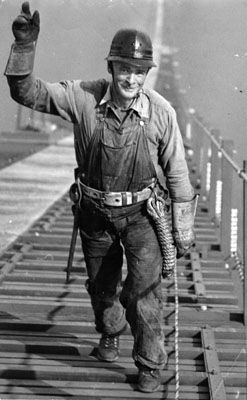
The Golden Gate Bridge stands as a testament to human ingenuity and engineering prowess. However, its construction wasn’t without a human cost. While the statistics often focus on a single, tragic incident – the 1937 scaffold collapse – the true impact goes beyond the numbers. Eleven brave individuals lost their lives while building this iconic landmark, a stark reminder of the sacrifices made to connect San Francisco to the north.
Joseph Strauss, the bridge’s chief engineer, championed safety throughout the project. The innovative safety net system undoubtedly saved countless lives. However, construction at such heights and in such harsh conditions remained inherently dangerous. The eleven workers who perished weren’t just statistics; they were individuals with families, dreams, and futures tragically cut short.
One such individual was Al Zampa, a young ironworker who fell from the bridge in 1st November 1936. His story, like that of the others, serves as a poignant reminder of the risks faced by the workforce. These men weren’t just nameless laborers; they were skilled professionals like riveters, ironworkers, and painters, each playing a crucial role in the bridge’s construction.
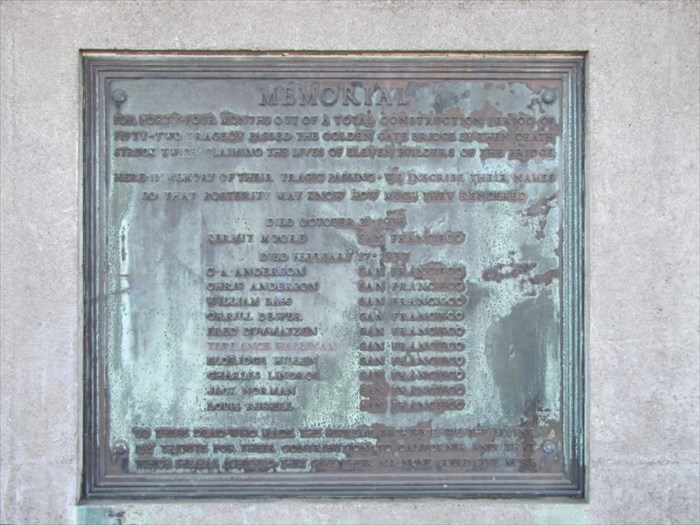
The Golden Gate Bridge project fostered a strong sense of camaraderie among the workers. They faced the elements together, relying on each other’s skills and courage. The loss of a colleague would have been a devastating blow to this close-knit community.
In recognition of their sacrifice, a bronze plaque commemorating the eleven fallen workers is affixed to the bridge’s south tower. The inscription reads: “In Memory of the Workers Who Died Building the Golden Gate Bridge.” It serves as a permanent reminder of the human cost of this engineering marvel, a somber counterpoint to the bridge’s dazzling beauty.
The Golden Gate Bridge may be a symbol of progress, but it’s also a monument to the human spirit. The workers who built it faced unimaginable dangers, and their sacrifice should never be forgotten. The next time you marvel at the bridge’s majestic silhouette, take a moment to remember the eleven men who gave their lives to make it a reality.
A Legacy Forged in Steel: Safety Triumphs and the Enduring Golden Gate Bridge
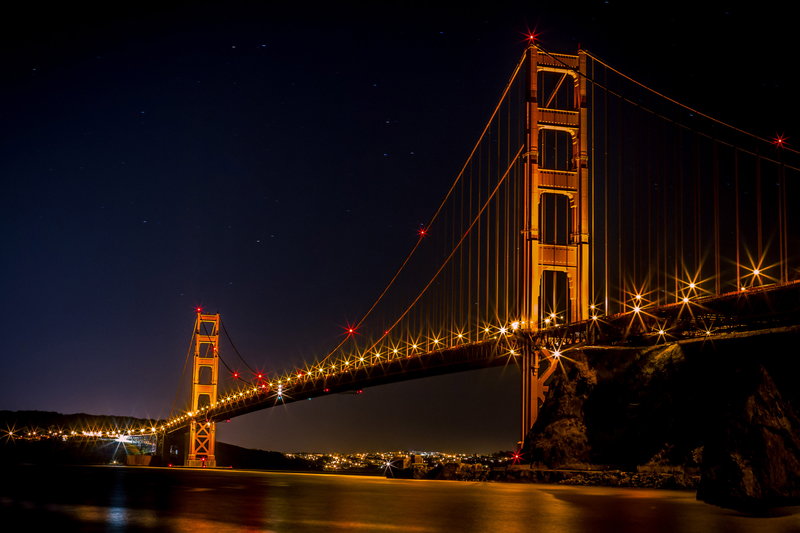
The Golden Gate Bridge’s construction, while marked by tragedy, also stands as a testament to a new approach to worker safety. While eleven lives were tragically lost, this number becomes even more impactful when compared to the dangers inherent in such large-scale construction projects of the era. The bridge’s overall safety record, despite the 1937 scaffold collapse, was a significant improvement over past endeavors.
In the early 20th century, bridge construction was a notoriously dangerous undertaking. The prevailing industry standard held that one fatality could be expected for every million dollars spent on a project. This grim reality meant that building a bridge like the Golden Gate Bridge, with its $35 million price tag, could tragically result in dozens of deaths.
Joseph Strauss, however, refused to accept this deadly status quo. He championed a culture of safety on the Golden Gate Bridge project, implementing innovative measures like the massive safety net system. This net, though not foolproof, saved the lives of nineteen workers who would have otherwise plummeted into the unforgiving waters below. Strauss also mandated hard hats for all workers, a practice far from commonplace at the time.
The Golden Gate Bridge project’s final death toll of eleven, while undeniably tragic, represented a significant improvement over the industry norm. This relative success can be directly attributed to the focus on safety measures. The bridge stands as a testament to the power of prioritizing worker well-being, paving the way for stricter safety regulations in future construction projects.
Today, the Golden Gate Bridge soars as a majestic symbol of San Francisco. Its fiery orange towers and vibrant red suspension cables have become instantly recognizable icons. But beyond its beauty, the bridge represents a triumph of human ingenuity and perseverance. It’s a testament to the visionaries who dared to dream of conquering the Golden Gate strait, the engineers who translated that dream into reality, and most importantly, the brave workers who risked their lives to make it happen.
The next time you gaze upon the Golden Gate Bridge, take a moment to appreciate not just its engineering marvel but also the human spirit it embodies. It’s a bridge that connects not just two pieces of land, but also serves as a reminder of the importance of safety and the enduring power of human ambition.
Frequently Asked Questions (FAQs)
1. How many people died building the Golden Gate Bridge?
Eleven brave individuals lost their lives while constructing the Golden Gate Bridge. This somber fact serves as a reminder of the human cost of this engineering marvel.
2. Was the Golden Gate Bridge the deadliest bridge ever built?
No, while the Golden Gate Bridge construction resulted in the deaths of eleven workers, safety measures in place significantly reduced the number of casualties compared to bridge-building projects of that era. The focus on worker safety during the Golden Gate Bridge construction set a new standard for future endeavors.
3. What was the deadliest accident during the construction of the Golden Gate Bridge?
The deadliest accident occurred on February 17, 1937, when a scaffold failure caused ten ironworkers to fall into the water below. This tragic event highlighted the inherent dangers of such high-altitude construction projects.
4. What safety measures were implemented during the construction of the Golden Gate Bridge?
Joseph Strauss, the bridge’s chief engineer, championed safety throughout the project. A crucial safety measure was the installation of a massive net system, which saved countless lives. Additionally, hard hats were mandated for all workers, a practice far from commonplace at the time.
5. What is the legacy of the Golden Gate Bridge in terms of worker safety?
The Golden Gate Bridge project, despite the tragic loss of life, marked a significant improvement in construction safety standards. The bridge’s focus on safety measures paved the way for stricter regulations in future projects.
Use of Our Content
⚠️ Content on “Mystery Uncover” is protected under US and International Copyright Laws.
You are free to reuse, republish, and share our content by giving credit to the source as Mystery Uncover with a link to the original material on mysteryuncover.com.


